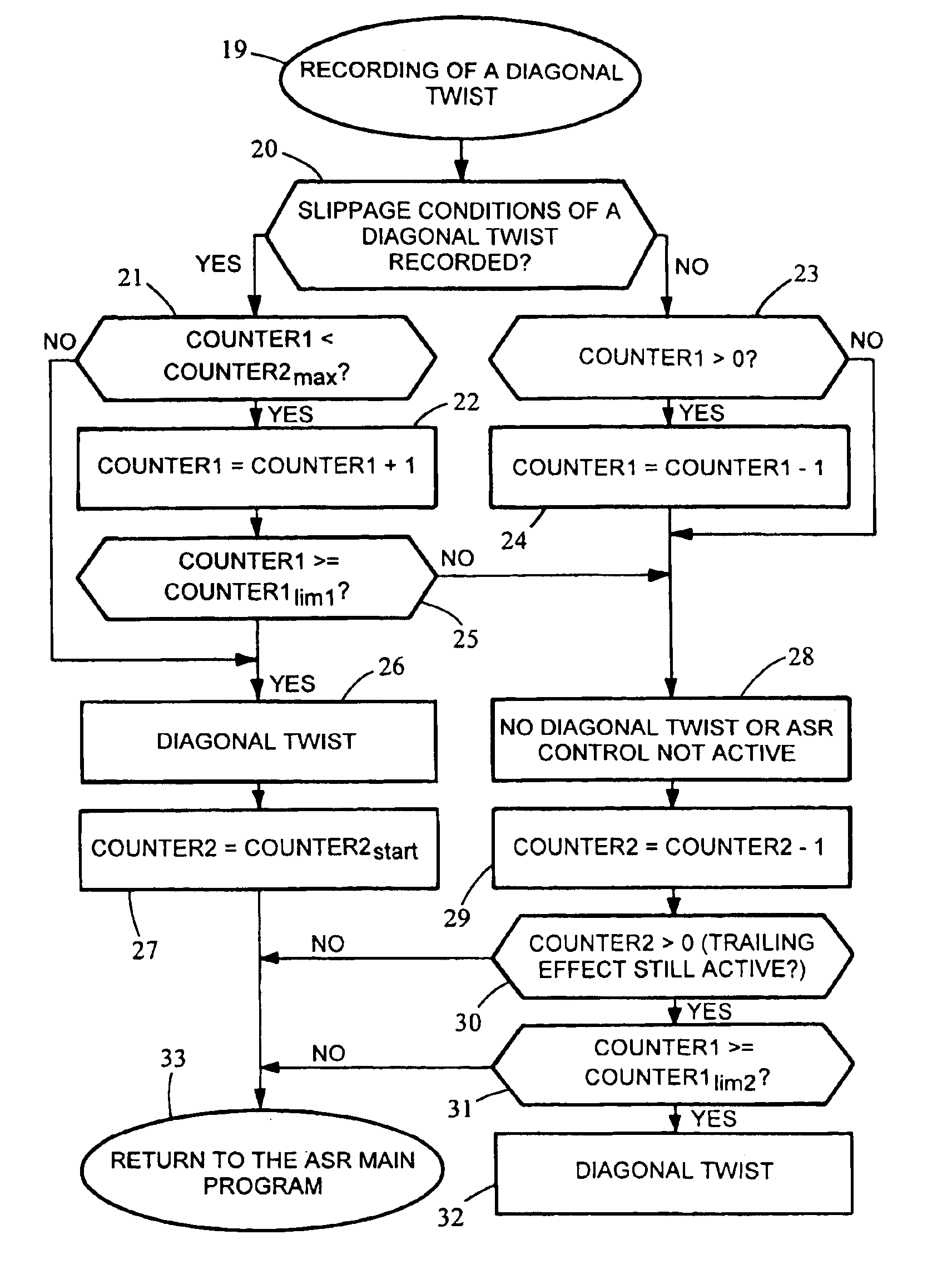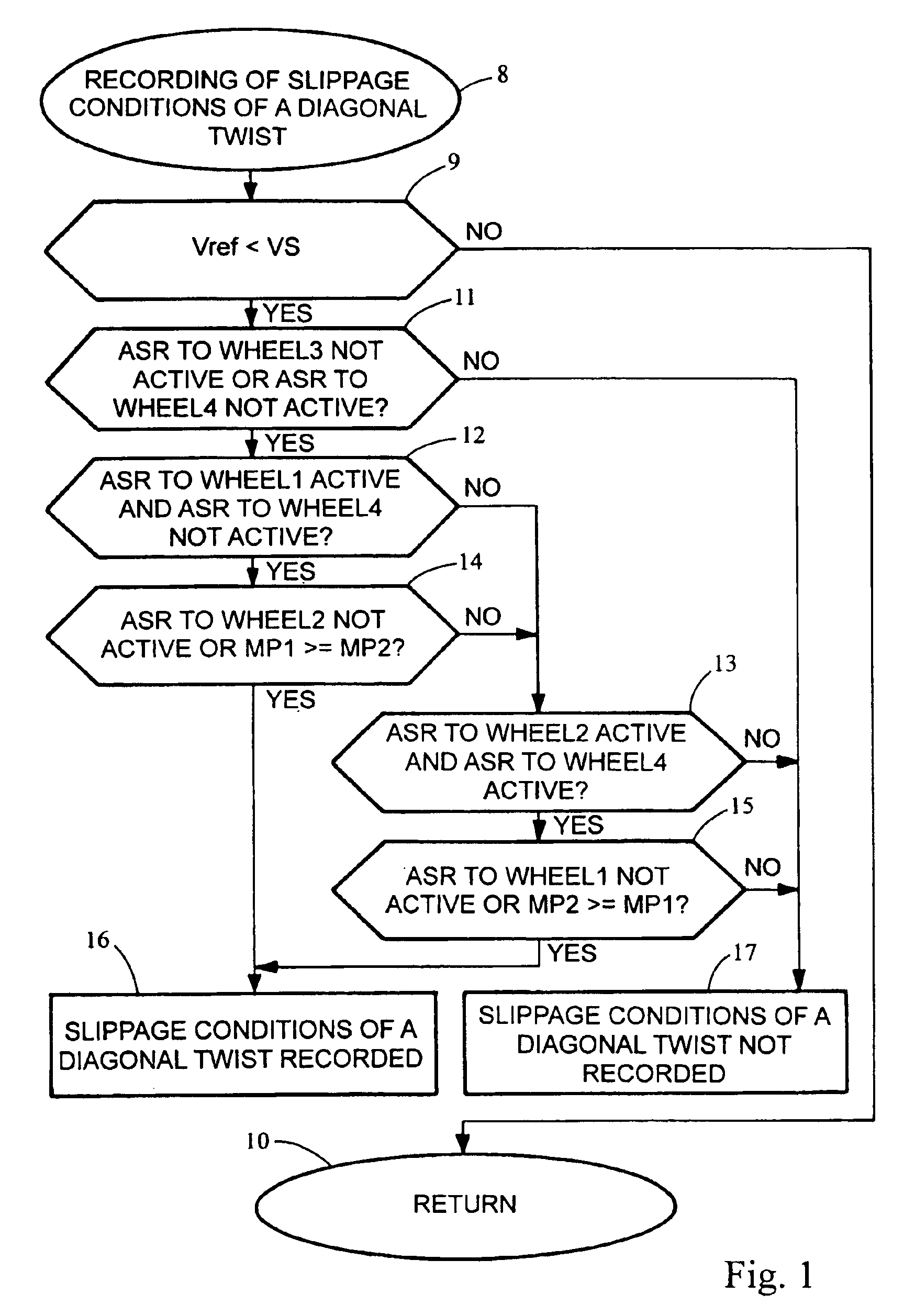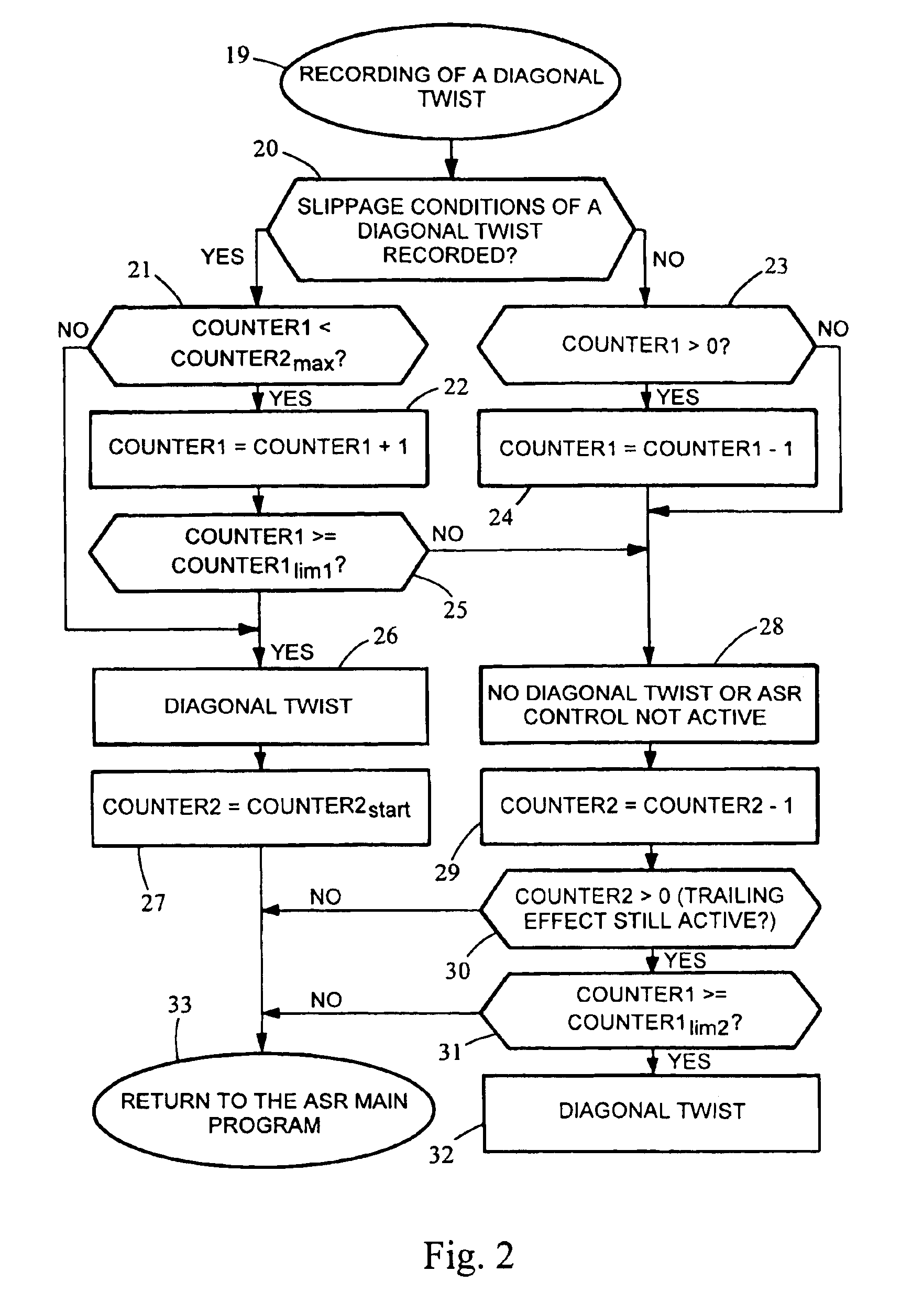Method for controlling a vehicle
a technology for controlling a vehicle and a control system, applied in the direction of machinery control, instruments, process and machine control, etc., can solve the problems of insufficient system, insufficient locking effect, and insufficient traction, and achieve the effect of sufficient traction
- Summary
- Abstract
- Description
- Claims
- Application Information
AI Technical Summary
Benefits of technology
Problems solved by technology
Method used
Image
Examples
Embodiment Construction
[0054]At the beginning after the Start (Step 8), In FIG. 1, a low vehicle speed or vehicle reference speed (Vref) lying below a speed threshold (VS) is required as a basic condition for detecting a slip condition of a diagonal axle twist. Since, in the case of a diagonal axle twist, the two wheels in contact with the ground usually do not overspeed, an estimated vehicle reference speed (Vref) corresponds quite well to the actual vehicle speed. In order to avoid unlearning the pattern when starting, preferably a Vref less than 3 to 15 km / h, e.g. less than about 6 km / h, is required. Contrary to the given concrete example of an embodiment (constant value), this speed threshold (VS) can also be a function of detection safety, because when there is a relatively high pressure level and relatively strong intervention of the traction-slip control, the vehicle speed, as a rule, will be relatively low, causing the above condition to be fulfilled.
[0055]In addition, the traction-slip control ma...
PUM
 Login to View More
Login to View More Abstract
Description
Claims
Application Information
 Login to View More
Login to View More - R&D
- Intellectual Property
- Life Sciences
- Materials
- Tech Scout
- Unparalleled Data Quality
- Higher Quality Content
- 60% Fewer Hallucinations
Browse by: Latest US Patents, China's latest patents, Technical Efficacy Thesaurus, Application Domain, Technology Topic, Popular Technical Reports.
© 2025 PatSnap. All rights reserved.Legal|Privacy policy|Modern Slavery Act Transparency Statement|Sitemap|About US| Contact US: help@patsnap.com



